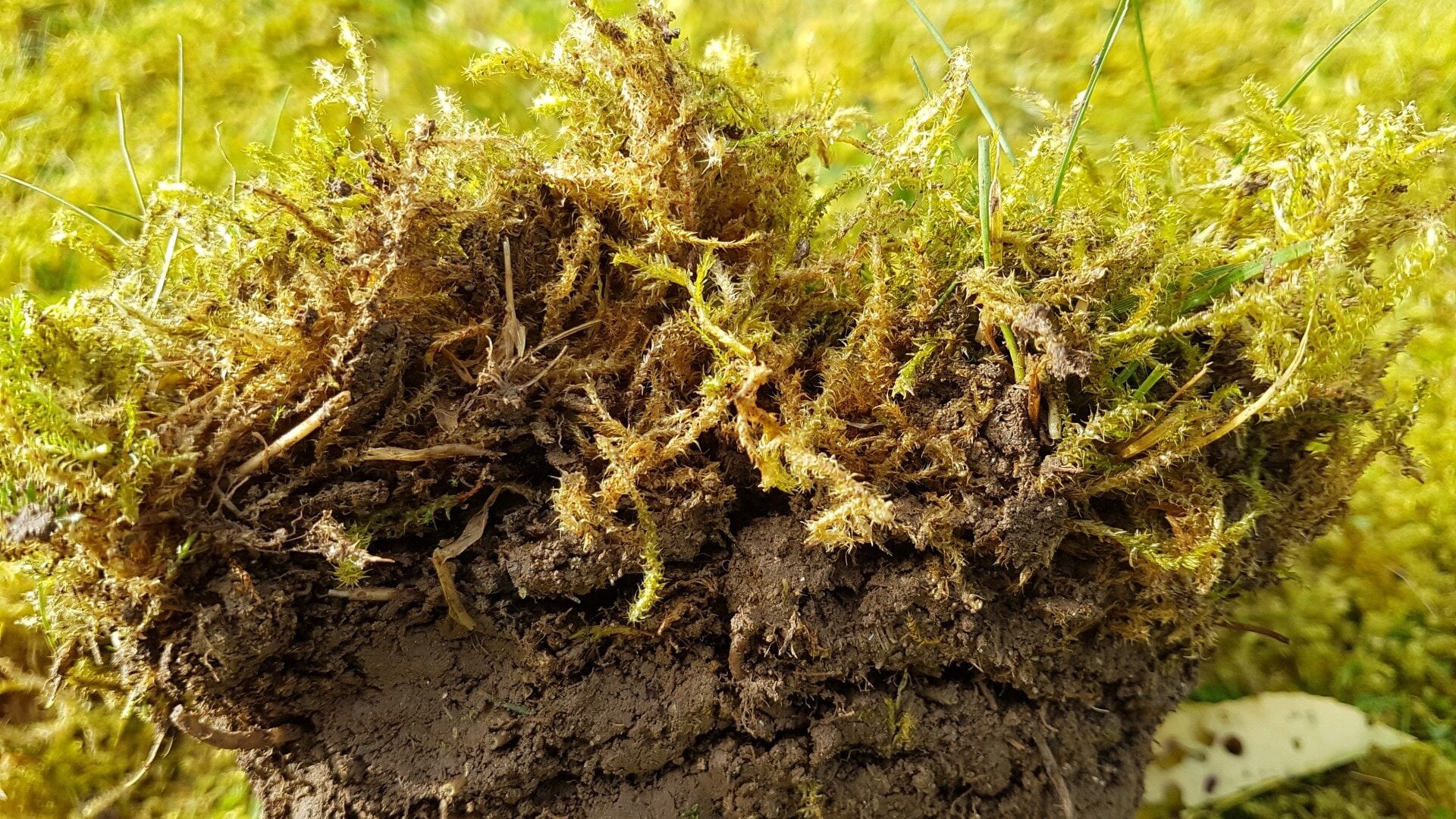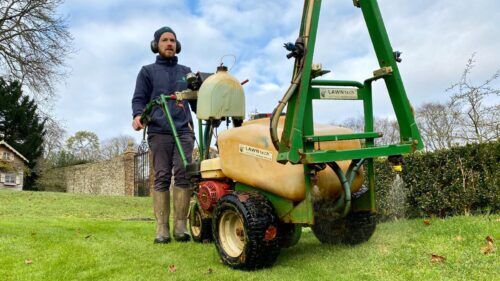Home ▸ Lawn Care Guide ▸ Moss ▸ How to control moss in your lawn
How to control moss in your lawn

Moss control is one of the most important tasks you can do to keep your lawn in good condition. All lawns in the UK are susceptible to moss due to our long dark winters and damp conditions and building some form of moss control into the maintenance schedule for your lawn will ensure it is controlled so that it does not become a problem.
Due to the natural habit of moss, it is not possible to indefinitely irradicate it from your lawn so regular treatments will always be required to keep it at bay. There are many techniques and non-pesticide products which help us to control moss and most of these also have other useful benefits to the lawn as well as just moss control.
When and how should Moss treatments be carried out?
We recommend treating moss during the Autumn and all the way through the winter until early spring when conditions are cool and damp.
What type of products are available?
We would recommend applying a moss treatment made from liquid iron with trace elements and wetting agents, as this will not only effectively controls moss but hardens and conditions the grass plants throughout the winter. Products available for domestic use tend to be either granular, soluble or liquid and contain a mixture of Sulphate of Iron and Sulphate of Ammonia, which should be applied in strict accordance with the manufacturer’s safety recommendations.
There are a few other systemic and bacterial products available for moss control which can give good results at certain times of the year but ensure to read all instructions carefully and take appropriate safety precautions when using any product.

How do I apply Moss treatment products?
Iron granular products such as Lawn Sand or Moss Blackening fertiliser can be applied with a walk-over drop spreader or rotary spreader. Small lawns can be done with a handheld rotary spreader. For liquid of soluble products a knapsack or walk-over sprayer will be required.
What to expect after Moss treatment?
Many moss treatments are iron based and work by drawing out moisture from the moss, turning it from a green colour to brown/black very soon after it is treated. The blackening will not be apparent for too long as the surrounding grasses fill in, but the dead moss can be raked out easily once it’s been treated. You can add this to the compost heap providing it is mixed with other composting material.

Moss which has been treated
How effective is Moss treatment?
Moss cannot be definitively eradicated, but it can be effectively controlled provided the correct products are used at the right time of year. Weather conditions, such as prolonged heavy rain, may influence how long moss control is effective before retreatment is required. We recommend that moss is treated at 6 weekly intervals during the winter.
How soon can I mow after a Moss treatment?
We recommend mowing is not carried out for 2-3 days following lawn treatments so that the treatment has a chance to be fully absorbed into the moss plant.
Should I rake out or scarify Moss?
Yes, scarifying or hand raking is the best way to remove a large build up of moss from your lawn and doing so will allow light and water back into the sward to help the remaining grass plants recover. This can be done by hand raking with a spring tine rake or by using a mechanical scarifier. We would advise treating the moss first as it will make the process easier. Lawns which have had large volumes of moss removed might also require aeration and over-seeding after scarification which will help the lawn to recover adequately.
If you have a particularly large garden scarification using a ride-on mechanical Scarifier or a ‘dethatcher’ is the best option.

What can I do to prevent it coming back?
It is difficult to truly irradicate moss and it is likely to return if conditions are right, but you can take the following steps to keep it under control
- Carry out regular aeration to ensure the lawn is not compacted, which can lead to waterlogging and provide perfect conditions for moss, see our advice on lawn Aeration
- If you have sparse grass coverage, consider overseeding in the Spring or Autumn to avoid the moss taking hold in the barer areas.
- Try and reduce shady areas to allow more sun onto them by pruning back hedges or shrubs
- Moss tends to thrive in acidic soils, so raising the pH can make it less habitable for future moss development. You can purchase a soil pH test to make sure and lime can be added to the soil to make more alkaline. Be sure to read the instructions on any products carefully before applying
- If the soil test shows the pH isn’t the issue, it may just be that the quality of the soil is poor. You can improve this by fertilising the lawn or adding a layer of organic top soil/ top dressing when completing other lawn works like aeration and over seeding
- Adding lime can help to balance the pH. Although this won’t kill existing moss, it makes the soil less inhabitable for future spores
- Carry out regular treatments to keep the grass strong and healthy, giving moss less of an opportunity to take hold
- Mowing regularly helps keep the grass in good health, but make sure your blade is sharp and don’t mow too short. See our guide (link) for further mowing advice
Is moss control needed on newly laid turf or artificial lawns?
Moss control should not be necessary on new lawns or recently laid turf. Artificial turf, however, can be affected by moss during particularly damp conditions or if surface water is left to pool on the turf.
There are specialists out there and products available for controlling moss on artificial lawns. Regularly brushing/sweeping will help stop moss taking hold and prevent water pooling on the surface.
What about moss on other garden surfaces?
See our dedicated guides to removing moss from hard standings such as patios, drives and paths, as well as garden furniture.
